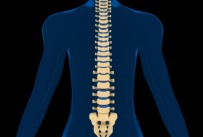Adult onset scoliosis

Adult onset scoliosis
Written by: Paul Kochoa, PT, DPT, OCS, CKTP, CGFI
So a patient of mine mentioned this article in the New York Times about scoliosis in adults. She was surprised that scoliosis was so prominent in adults, and was not just relegated to a younger population.
True, everyone thinks about how scoliosis is usually screened. Most people can remember being in grade school and having a day where everyone in the class would go to the nurse’s office. We would bend forward, and then have the doctor squint down the spine to check for any curvature. Since this happens in grade school, we usually associate scoliosis with juveniles or adolescents.
However, there are different types of scoliosis. In relation to this type of scoliosis (idiopathic), there is a juvenile onset or an adult onset. When we’re younger, our bones are developing and we’re growing, so we have a screen to see if the spine is growing straight. If there’s a problem, we have to address it via therapy or surgery, depending on the severity of the curvature. When we’re older, the scoliosis develops differently. Our bones and joints are already fully developed. The stresses that our bodies go through over the years, can cause changes in the joints and bones.
In older adults, degenerative changes can occur in the spine and joints. These degenerative changes can be so severe that they can change the angle of the spine, thus causing scoliosis. Sometimes, it can be very subtle. An example you can think about is your favorite chair. You sit in it day in and day out, it’s so comfortable and conforms to your body just right, but it’s not putting your body in a completely neutral position, there’s an ever-so slight lean that you comfortably assume. Over months or years, this static, comfortable position can cause slight imbalances in the back, one side can get shorter and tighter; and the other side can get longer and weaker. Imperceptible at first, these subtle changes can then cause certain movement compensations that further the imbalances. The movement compensations then can lead to imbalances with the stresses on the spine and joints, which then increase uneven wear and tear, which could lead to adult onset idiopathic scoliosis.
This is just one example of how this type of scoliosis happens, there are many others. But one thing we can keep in mind is that our bodies are made for motion. A physiotherapist can screen out movement imbalances that can lead to adult onset scoliosis. Better catch it first before it gets worse.
If you would like more information, please call Professional Physical Therapy and Training at 973-270-7417. Our offices are located within the YMCA locations in Madison and Summit, NJ. You do not need to be a member of the YMCA to visit with us.
Image courtesy of cooldesign / FreeDigitalPhotos.net